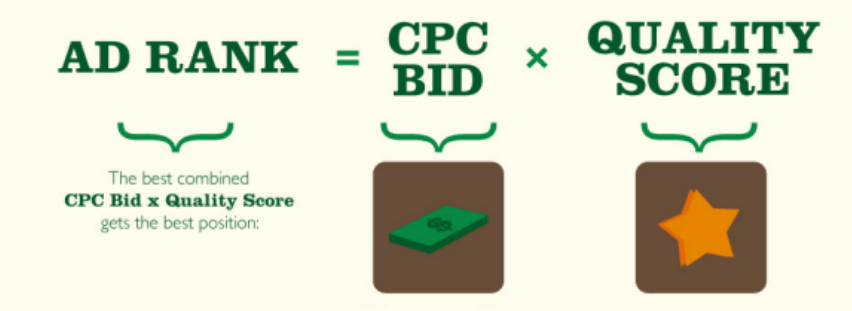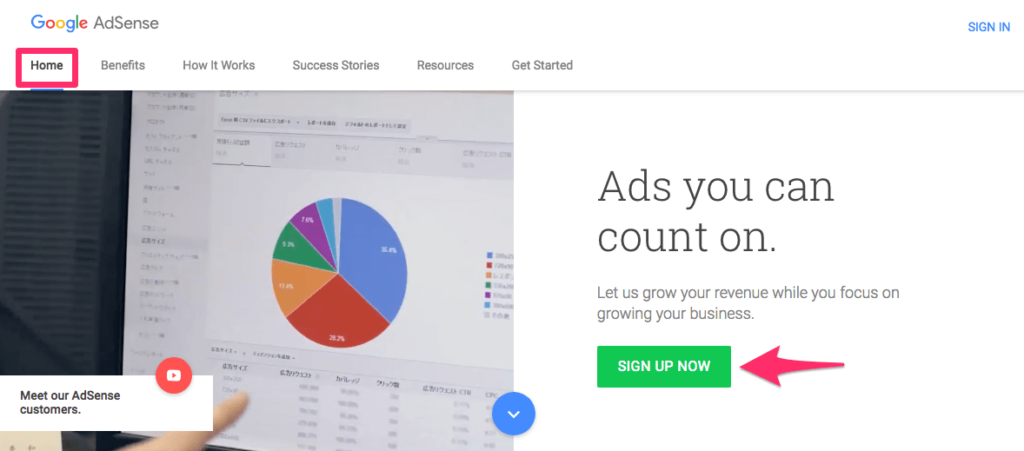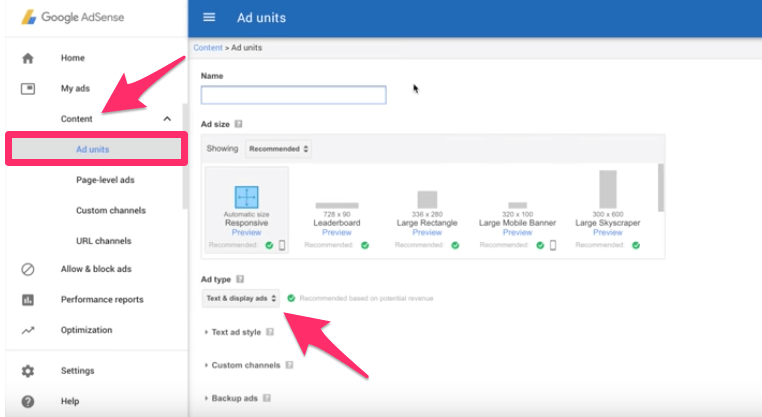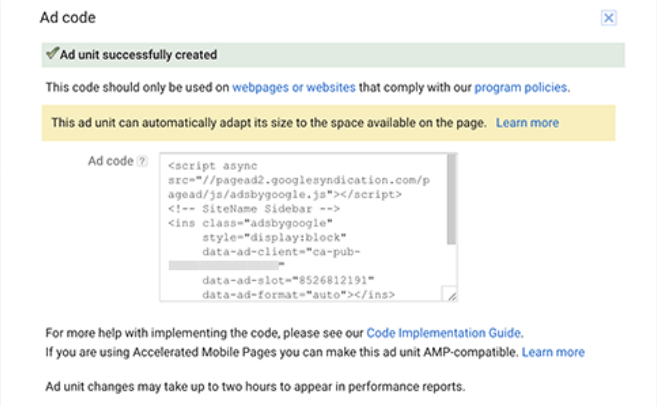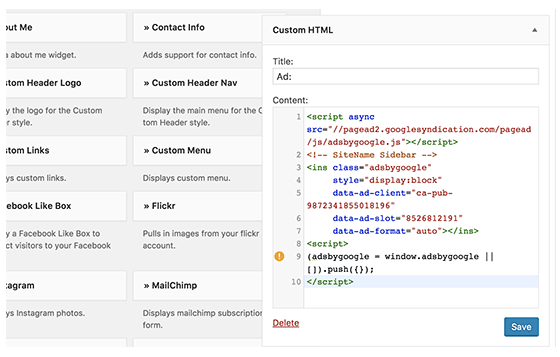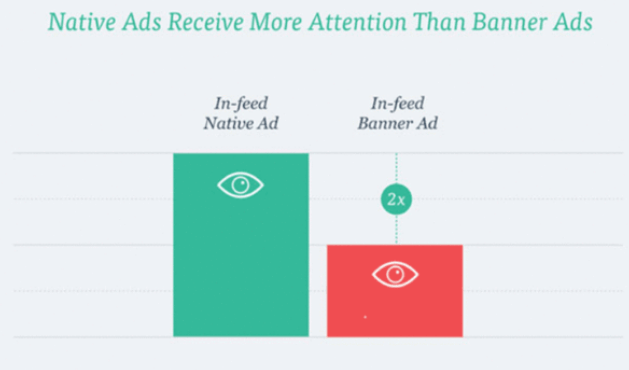What’s inside? Here are the questions answered in today’s reader mailbag, boiled down to summaries of five or fewer words. Click on the number to jump straight down to the question.
1. Handling income bump
2. Partner hides bad spending habits
3. Urgent purchases
4. Personal finance books to avoid
5. Rewarding children for good grades
6. Bullet journaling and “notebook method”
7. Frustrated with credit card debt
8. 401(k) investment options
9. Confessions of a comfortable Christian
10. Store brands aren’t always cheaper
11. Inexpensive good tent for camping
12. Basics needed for teaching chess
When I write during the day, the family dog is almost always right at my feet. He often lays right on top of my feet, keeping my toes warm but also making me loathe to even move them.
The nice thing about this is that it’s a great reminder of someone approaching our house or of his need to go to the bathroom. Those are the two reasons he jumps up – he hears someone approaching our house or he needs to use the bathroom. In either case, I know it’s time for me to get up, too.
He has become my own little reminder to get up and stretch and move around every once in a while.
On with the questions.
Q1: Handling income bump
My income is about to increase (from mid $60,000s to $100,000 with bonus opportunities as well). I’m pretty financially savvy but am curious how you might approach a big change like this. I plan to save most of my income (and fight lifestyle inflation best I can), eliminate the last $4,000 of student debt I have as soon as possible, and save significantly more money towards my savings for a down payment on a home. I have other small savings goals as well, all in Ally savings accounts. I have no other debt and don’t plan on acquiring any. My biggest challenge is my new company does not have a 401k. If it did, I would max it out no question. I already max out my Roth IRA every year. My questions are: Should I switch to a traditional IRA instead of a Roth? And where should I save for retirement with no 401k? Should I open a brokerage account and invest like I normally would in index or mutual funds? I’m worried I don’t have enough tax-deferred options, but I also don’t think $6,000 in a traditional IRA will make a huge difference in my tax bill nor is it enough to drop me to a lower tax bracket. Is there anything else I should be doing differently with this change in income? I’m in my mid-20s, unmarried with no kids.
– Stacia
If you’re not self-employed, are earning a salary over the Roth IRA income limit, and your employer doesn’t offer a 401(k), your options are pretty limited. As you note, a traditional IRA is an option. Unless you’re making a very large income ($190K or above), your traditional IRA contributions are tax deductible, so that’s a decent benefit. Still, that only covers a some of what you want to put away.
Outside of that, you should probably open an ordinary taxable brokerage account and start stowing away money in there. While there aren’t really any tax benefits for doing so, just quietly sticking your money into an index fund, reinvesting the dividends, and paying the small tax bill on the dividends each year is going to build a nice nest egg for you. There’s also no restrictions on it, so if you decide to go start working for a charity at 45, you can start drawing down that money at that time if you so choose.
So, if I were you, I’d contribute to a traditional IRA assuming that you can get value out of the tax deduction, then put more in an ordinary brokerage account.
Q2: Partner hides bad spending habits
I recently found out that when my husband buys stuff at the store, he almost always takes extra cash out and uses it as pocket money for various things. So, he might spend $160 at the store and then takes out an extra $60 so that it shows up on the bank statement as $220 at the store.
I figured this out recently when I looked at a few grocery receipts and saw that it didn’t match what was on our bank statement.
This hasn’t caused any real financial problems for us. We don’t have any credit card debt or anything and we both contribute to retirement. I still feel like it’s dishonest.
I have not decided how to talk this over with him. I am worried that I’m going to get really mad in this conversation especially if he denies it or acts like it’s not a problem.
Do you have any advice?
– Ellen
If it’s not causing you any financial problems, my first suggestion to you would be to figure out why exactly this is upsetting you so much.
Is he directly lying to you about the withdrawals? If not, I don’t think he’s being dishonest.
Is he using the money for something detrimental to your marriage? If not, I don’t think he’s being cruel.
Do you feel as though you should have some “mad money” as well if he does? If that’s the case, you could simply do it yourself, or bring it up as a conversation topic with your husband.
I would really, really suggest that you dig into why exactly you’re upset before talking about it with him, though. Why are you upset? Whatever your answer is, why does that make you upset? Keep doing that until you get to a real core answer. That’s the thing you should talk about with your husband.
I don’t think you’re blowing your concern out of proportion – you have a right to be concerned and should be. I just think your concern is unfocused at this point, and coming into this conversation with a lack of focus is probably going to be bad for everyone involved. Spend some time thinking about what really bothers you about this before you talk about it. Figure out what outcome you would really like, and whether it’s actually fair to both of you.
Most likely, your husband doesn’t consider it dishonest nor mean nor does he consider it a big deal. He probably just wants some pocket money so he can go out to lunch with coworkers or easily buy gifts without the numbers showing up on a bank statement. Keep it in mind that he probably genuinely feels like he’s not doing anything wrong at all, so he’s very likely to get defensive if you are angry and confront him in a strong way.
In other words, be calm, think through the situation thoroughly, give your husband the benefit of the doubt, consider what outcome you would like, and then enter into the conversation with a cool head and a rational plan. It’ll go better for everyone involved.
I think, in general, when you’re upset with your spouse’s behavior, taking the time to really figure out what’s going on and how it bothers you without immediately entering into an emotional argument is going to benefit everyone involved.
Q3: Urgent purchases
Since you’re into boardgames, i think you’ll understand this. waiting for a month before making a purchase certainly makes sense, but what happens when you’re into certain collectibles (action figures, for example) and waiting means risking a sell-out and/or having to chase a figure for double or triple the price on the aftermarket, only because you waited so much?
– Harry
I set aside part of my hobby money each month for the unexpected. I keep it as pocket money so that when I stumble upon something surprising, like a huge sale or something like that, I have enough money that’s already budgeted for to buy that thing.
Let’s say, hypothetically, that you budget $100 for your hobby each month. You might plan ahead to spend $60 of it on carefully researched purchases, but the other $40 goes into your wallet for the purpose of buying unexpected items. That way, when you do come across something special, you can act without worrying about it.
I always have an ongoing list of board games that I’ll pick up if I ever see them on deep discount somewhere, and I set aside enough of my hobby budget each month so that I can jump on such deals if I find them.
Q4: Personal finance books to avoid
Found a list of good personal finance books on your site and you say most personal finance books are good and have value particularly for their target audience. Do you have any that people should avoid?
– Mark
I’m not a big fan of the Rich Dad, Poor Dad books by Robert Kiyosaki. Some people find them inspirational, but there are a lot of inspirational personal finance and entrepreneurship books that don’t fall into some of the traps this book falls into. The book offers pretty bad advice, encourages people to spend their money on Ferraris and such things, and refers to those who disagree with anything in the book as “hamsters.” If you want inspiration, go elsewhere. If you want good advice, go elsewhere.
I generally don’t find much value in books that “guarantee” or promise financial returns that are beyond the average annual return of the stock market. Literally no one can beat the market consistently outside of people with enormous amounts of assets under their belt that can manipulate entire investment markets. Stick with books that discuss low cost ways to match the stock market.
I also generally find more value in books that are focused on principles above all else and supports those principles with examples rather than books that are focused on “timely tips.” “Timely” books don’t age very well. If the first chapter or two isn’t highly applicable today to at least some people, then just put the book aside.
Aside from those caveats, most personal finance books are pretty good. There are just differences in tone and differences in who the target audience is.
Q5: Rewarding children for good grades
Do you have any thoughts on whether to reward children for good grades and how to do so effectively? My parents used to give me $5 for every A and $2 for every B but I never felt like it actually motivated me to be a good student.
– Nolan
This is an area where Sarah and I are not in full agreement. I am a big believer of trying to increase the intrinsic reward of good grades through encouragement of effort. Some of the things I try to do at home are to have an electronics free “study hall” for a while after school where there are no electronic distractions and plenty of table space for a set period of time so they might as well study something or do some homework assignment (I actually do this alongside them, reading some personal finance book and taking notes on it, unless they need homework help), to talk a lot about the value of putting forth effort, and to solidly express joy at good results but make sure that the connection to the consistent effort is clear. I don’t really believe in direct rewards for good grades.
Sarah, on the other hand, really valued a reward system like Nolan describes that her parents had, so we’re also replicating that system, too. It’s much the same as your system, but with some inflation and some penalties for low grades. We give them $10 for every semester A, $5 for every semester B, and subtract $10 for every semester grade at a C or below.
I think the dual-pronged approach works pretty well for our kids. At the very least, I think it does the most important thing of all – it conveys that we value putting forth effort in school and that good grades are the result of good effort and that there are other rewards as a result of good grades.
Q6: Bullet journaling and “notebook method”
Your mailbox posts about your friend with the “Notebook”, sounds like the Bullet Journal method. Go to You Tube to watch Ryder Carroll’s videos of his method. Many people have videos about Bullet Journaling, but he started it and uses a wonderful basic system. Actually, I am surprised you have not written about his system as it dovetails David Allen’s Get It Done and Cal Newport’s Deep Work, (they both endorsed Carroll’s book). Ignore the pretty colorful pages that you will find on Pinterest under Bullet Journals. Go with the simple framework.
– Alex
There are definite similarities between the two. I’ve written about Bullet Journal in the past and gave it a trial run a few years ago, but it always felt like just a bit more upkeep than I wanted from a system. My friend’s system is basically an incredibly simplified Bullet Journal.
For me, the best use of paper is for freeform thinking – dumping out my thoughts, jotting down an unstructured note, and so on. I use pen and paper several times a day for this.
However, when I actually want to do something with those things, I find that electronic tools just work better for me. I have a digital calendar, for example, and a digital to-do list and a digital “notebook” to store and flesh out ideas.
Q7: Frustrated with credit card debt
When I was in college I made some bad mistakes and racked up $6K credit card debt on top of my student loans. I got an okay job in my field that will lead to bigger and better things but I only make $32K a year and even though I have roommates that doesn’t leave a whole lot left for getting rid of debt. I have been making minimum payments with an extra $50 a month for 3 years and there’s still $4K in credit card debt left. It feels like a trap I will never get out of.
– Pauline
I want you to sit down and look at the minimum payment you’re making this month. Let’s say it’s $50 – I don’t know what the exact amount is. You’ve said that you’re adding $50 to that minimum payment, right? So, you’d make a payment of $100 on your credit card this month along with your student loan debt, right?
Okay, whatever that total amount is, keep track of it. You’re going to put that much toward your debt every month. Maybe the total is $400 – $100 toward the credit card debt and $300 toward the student loan minimum payments. Keep that amount steady.
Each month, you’ll notice that your minimum payment on your credit card drops a little. The next month, it might be $48, which means that your “extra” payment is $52. The next month, it might be $45, which means that your extra payment is $55. What you’ll notice is that this starts to accelerate – the shrinking of the minimum payment goes faster and faster until it’s gone.
Watch for that. Don’t sweat the total. Watch that minimum payment decline, faster and faster. That’s where you’ll really feel the progress.
One day, it’s gone. So, what do you do? You take that $100 you were using on the credit card and apply it as a $100 extra payment on your student loan with the highest interest rate. Take what you’re paying that first month – your normal monthly payment plus $100 – and hold that amount steady for all future payments on that debt until it’s gone. Each month, the balance on that loan will go down, and over time, that shrinkage will accelerate. Eventually, it disappears, and you roll it forward again into your next student loan.
What happens as you’re doing this is that your progress accelerates. It’s like you’re on a marathon, but rather than going at the same pace or slowing down, you start speeding up. Focus on how you’re speeding up. Don’t sweat how far off the end destination is. Just focus on how the total debt is getting smaller and smaller and the shrinkage is happening faster and faster.
Then, one day, you’re debt free.
A lot of frustration goes away if you know where to focus. Look at your own progress and the improvement in your situation month over month. Look at how much debt vanished, and how much more debt will vanish this month. It feels a lot better.
Q8: 401(k) investment options
Went to sign up for 401(k) at end of workday on Friday. Got everything done but investment choices and there are a lot of them. The HR tried to summarize them but didn’t seem to know what she was talking about. How do I even pick without doing many hours of research?
– David
The important thing to note here is that you’re far better off starting to contribute immediately to a decent investment option than waiting for months before starting to contribute to a “perfect” investment option. There really isn’t a perfect one, for starters, and the gap between the best option and the worst for most 401(k) accounts isn’t that big.
If I were in your shoes, I would simply look for a Target Retirement fund and choose the one that’s closest to the year where I turn 65 (or later, if you think you’re retiring closer to 70 or 75 or whatever). Most 401(k) plans offer these. A Target Retirement fund is one that’s very aggressive when you’re young and gradually gets more and more safe as you grow older (with the returns gradually going down as well).
If a retirement fund isn’t available, if you’re more than ten years away from retirement, I’d put everything into a total stock market index fund. If you’re closer than that, split your contributions 50/50 between a total stock market index fund and a total bond market index fund. Those investments should be available if there’s a long list available to you.
Those choices aren’t perfect, but they’re very solid and will let you get started now. After this, spend some time actually looking at the investment options and figure out what’s right for you.
Q9: Confessions of a comfortable Christian
I know you don’t typically dive into religious topics, but I wanted to get your thoughts on this article: What the Bible Doesn’t Say About Financial Security
– Pete
I think the article hits upon a deep truth in modern American society: the bottom 70% or 80% of income earners, and even some higher than that in high cost of living areas, are not very financially secure themselves.
Yes, this may be due to personal choices, particularly those in their past, but the reality is that most Americans can’t survive even a single missed paycheck, and when you’re in that situation, it’s financially scary to give a lot to charity. Some still do, of course, but it’s risky.
The point of the article isn’t so much to give more to charity, but to realize that the difficulty so many have is that we no longer rely on community but view our burdens as wholly our own. We don’t see ourselves as having a real role in helping our neighbor with his or her burdens, nor do they help us. It’s a call to work on building community, and it’s a call I strongly agree with. There’s a reason I very regularly mention looking for community groups to be a part of – real life communities can be incredibly strong and valuable for all involved.
If you found this article interesting, I strongly recommend reading Bowling Alone: The Collapse and Revival of American Community by Robert Putnam. It’s one of the most personally influential books I’ve ever read. It convinced me of the value of being more community focused, and you’ll see fingerprints of it all over The Simple Dollar.
Q10: Store brands aren’t always cheaper
While your advice of buying store brands all the time is generally good, sometimes store brands are cheaper. This is particularly true with sales but every once in a while the regular price of a name brand is cheaper than the store brand. If you rush through the store and grab just store brands you might be paying more sometimes.
– Victor
You’re absolutely right. While I rarely see a name brand that’s lower in price than a store brand – it does happen, but it’s pretty rare and the difference is usually tiny – there are lots of situations where a name brand on sale is lower than a store brand.
My usual strategy at the store is to just trust the store brand by default. I don’t worry about the very rare occasion where the store brand is actually more expensive, because checking all of those prices every time just to save $0.10 isn’t worth the effort. What I do watch for are sale price tags; if I see them on a product I’m buying, I do pay attention and see if the sale price is cheaper than the store brand price.
On the occasion when the store brand is on sale, I usually stock up. (Not long ago, there was a big store brand pasta sale at my local store and I definitely stocked up!)
Q11: Inexpensive good tent for camping
Want to go camping with my kids this spring and summer. We moved not too far from a state park and [a national park] is just 15 minutes away. Recommendations for a good one that’s not too expensive?
– Alice
A four person Coleman sun dome tent is perfect for a family wanting to go “car camping” (meaning their campsite is close to where their car is parked and they’re not backpacking a long distance). You can get a larger one if you have a large family or anticipate friends regularly camping with you. This is the model I’m referring to.
You’ll probably want some sleeping bags (which you may already have), too. A good pocketknife is invaluable for things like cutting sticks to roast hot dogs and marshmallows and the like. You’ll want something with which to start a fire – long matches or a lighter. You should save packing paper and newspapers to help you start a campfire. I’d also buy some very long tongs so that you can adjust the campfire a little and also put foil packet meals directly on the coals and pull them off.
Camping honestly isn’t expensive at all. Once you have a few pieces of equipment, the cost is basically the price of the camping site and maybe a bit of wood. Since you’re usually eating food you brought yourself, the cost of eating is pretty low, and the natural environment around you gives you all of the entertainment you’ll need.
Q12: Basics needed for teaching chess
You wrote that your youngest son plays chess. What do you do to teach him the game? My son and daughter are both interested (ages 6 and 4) after seeing people playing in the park but I know little about the game. I bought them an inexpensive chess set but yeah I barely know how to play!
– Tammy
You really have all you need. Everything else you could possibly need until you get to extremely sophisticated play can be found online for free.
There are thousands upon thousands of videos on Youtube explaining how to play chess and delving as deep into the strategy as you want. I don’t know your children or their interest level, but the five video long Chess for Kids series might be a good place to start.
Watch the series with your kids – it’ll teach you and your kids the basic rules in a really gentle way. Then, just play games with them and encourage them to play against each other. If you find that you are better than your kids, one great way to make the game fair is to allow your kids to switch sides once during the first twenty turns of the game – literally turn the board around. You can also “spot” them pieces by starting the game without a piece or two on the board. Be aware that kids can pick up chess incredibly fast and it’s likely you won’t need that advantage for long.
You may find that your kids play it a few times and lose interest, or one or both of them might really take to it. If they do, see if there are any chess clubs in your area and get them involved there. Having a broader community and friends who play can do a lot to encourage a burgeoning interest.
Got any questions? The best way to ask is to follow me on Facebook and ask questions directly there. I’ll attempt to answer them in a future mailbag (which, by way of full disclosure, may also get re-posted on other websites that pick up my blog). However, I do receive many, many questions per week, so I may not necessarily be able to answer yours.
The post Questions About Rewarding Children, Tents, Store Brands, Hidden Spending, and More! appeared first on The Simple Dollar.

Source The Simple Dollar https://ift.tt/2JkGZby

